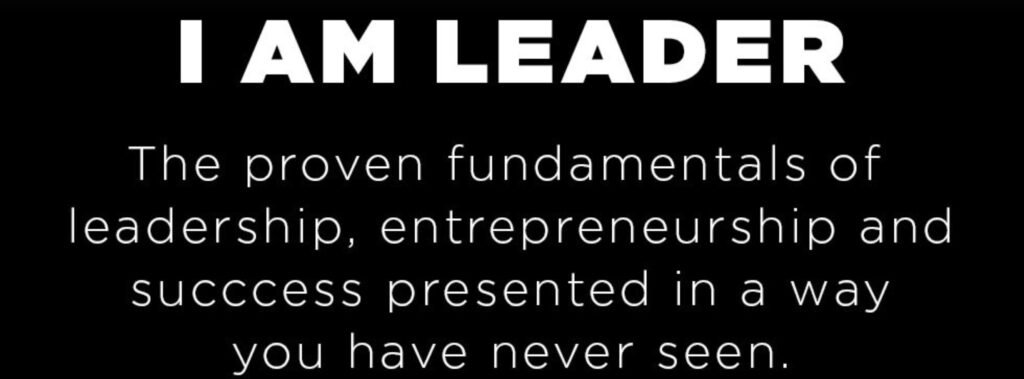If you want to get the most out of your Service or Parts Department, first you need to ask: What’s the purpose of a job interview?
If you said, “The purpose of a job interview is to scare the living crap out of people,” then you’re wrong. The purpose is to understand what their style or system is.
Whenever I was hiring Service Advisors, I would always ask, “When you’re walking up to a customer’s car to write them up and help them. What are you thinking? What’s going through your head?”
What we definitely don’t want to hear is, “I’m thinking of what I’m going to sell them.” That’s dead wrong.
Sales are easy. The sales come if you connect. If the first thing on your mind is sales, then that’s the totally wrong mindset!
What Jeremy and I want to hear is that they’re going to look to form a solid connection with the customer. That’s the only way you can tell a good Service Advisor from a bad one: You want somebody who’s in the spirit of connecting, helping, and taking care of the customer. Someone who is going to look for personal clues from the vehicle, anything that can tell the Advisor how they can help the customer.
Elon Musk has one simple, important question that he asks in every interview, and I think it’s totally genius: “Tell me about some of the most difficult problems you worked on, and how you solved them.”
You could frame that and put it on a wall. That’s how great this question is.
One way you could take this question and apply it to Service Advisors is to say, “Tell me about a difficult customer experience or an unhappy customer, and how you turned them around.”
Notice the similarities? It cuts through all of the noise and tells you exactly what the interviewee’s style and system are like, and also opens the door for some pretty entertaining stories.
Next time you’re hiring Service Advisors (or any position in your shop, really), definitely try this one out.
In auto news this week, Goodyear Tire is envisioning a radical new way to replace your tires, and it is absolutely nuts: Rather than swapping out the tire for an entirely new one… What if you made a tire that grew its own skin?
No, really.
Their concept is a tire that regenerates tread with a compound that they insert into the center of the tire, which Jeremy and I have taken to calling the “Goodyear goo.” The tire then pushes rubber out from the rim, and grows its own tread. See? Absolutely nuts!
They even have the idea of using different inserts for different purposes. You got a track day coming up? Put racing slicks in. You got winter coming? You’re going to need your snow tires… All of this without having to go into the shop!
Will this affect new tire sales and alignment sales? Possibly. As Jeremy puts it, “It depends on the cost of the goo.” Either way, this is one of those innovations that (if it sticks) could totally change the industry as we know it. Definitely something to keep track of.
With that, we can move on to your questions. Remember to post your question on Facebook, LinkedIn, YouTube, or send it to [email protected]. If we read your question on the podcast, we’ll send you a Service Drive Revolution swag package with a T-shirt, stickers, and coffee mug!
“I just recently discovered your content. Really appreciate someone experienced putting out this knowledge. Do you have any recommendations for a shop limited by technician load? This is an opportunity out the wazoo, but with only four techs and six bays, I’m not sure how to seize it.”
Strong wording there. Seizing the opportunity.
Yeah, it’s a sorry state of affairs. Right now, the industry is losing two techs for every new one coming in… And it’s not going to get better. Shops everywhere need to get really good at hiring Technicians, because in the near future, whoever has the techs, wins.
What I would suggest is to sign up for our OnDemand Training platform. In there, we’ve got a module called Technician Tree, and it’ll teach you how to grow your own technicians, how to hire the top technicians in your area, and how to maintain the ones you already have.
The other thing that I often see is, when you struggle hiring techs, your culture in the shop is terrible, because you need techs more than they need you. You have a bunch of terrible techs with terrible attitudes, that don’t want to work terribly hard, driving the terrible culture in your terrible shop.
On the show, Jeremy also brought up supply and demand. By that he means, you should get your effective labor rate up by teaching your Advisors how to sell, learning pricing strategies, creating a menu, all that because as things go forward, the cost of a technician is going to go up. If you have a high effective labor rate, you can afford to pay techs what they’re worth, so they can help you meet that high demand. All of this is also explained in our OnDemand Training.
Every technician is worth between $10,000 – $15,000 in gross profit every month. If you can’t afford our OnDemand Training platform, then you definitely can’t afford new techs (and you might want to get into another industry).
“Do you guys like the idea of waiving diagnostic fees in order to capture the repair? Curious about your response. If we lose the shop to another shop, he only gets the diagnostic. If I sell the job, I can potentially get them a better chance at more hours. Plus, sometimes you don’t lose anything and both get time and diagnostic. Just curious how most others perceive it, plus wanted Chris’s feedback.”
Now, I’ve done this exact thing before and think it’s a good strategy… but Jeremy’s definitely not a fan of waiving diagnostic fees. In fact, he says the only reason somebody would waive diagnostic fees is because of “weak sales skills.”
That might seem a bit harsh, but I get the point he’s making. If the customer comes in for a diagnosis but decides to get the repair at a place that’s cheaper, even if they didn’t do the diagnosis themselves, then that’s simply a sales objection. Advisors need to know how to close a deal, and part of that is knowing what to say or do when the customer says, “No.” Again, if you want some help then you can go to our OnDemand Training platform, and get a coach.
I agree with what he says, but I’ve used this strategy before with a good outcome. Ford had a bunch of my clients open these off-site express service departments, which were sometimes five miles away from their dealership. Can you guess what happened?
Yeah, they would lose money.
One of the marketing campaigns I would do over and over again was, “the check engine light is free,” and that would work! But what Jeremy said is right. You definitely want to train your Advisors to overcome sales objections like that. It’s not completely black and white, and there are some situations where it’s okay to write off something to keep a job.
So now let’s move on to our title topic of the week… 4 Hidden Ways Parts Can Sell More Labor. That’s right, we’ve discovered a few ways that you can turn your Parts Department into a profit-generating machine! Some of these are so obvious and make so much sense that I genuinely can’t believe that people out there aren’t doing them.
Number one: Sell some accessories or modification
A lot of that goes to the aftermarket because we don’t ask and we don’t try.
I do this all the time. I’ll sit in the drive and look at the next 20 cars coming in. Now, what percentage of the vehicles coming into the drive do you think have some sort of upgraded wheels or lift kit?
If you sit there and count, it’s about 50%.
So why don’t we put them in the showroom pre-lifted? The key to selling more accessories is to gamify it. Why isn’t the parts manager at the sales meeting every Friday gamifying and handing out spiff money for accessories sold?
Get out of your office, get away from your desk, take the seat belt off! Get yourself a wad of cash and start spiffing salespeople to sell accessories! Even spiff the sales managers if you have to!
Number two: Body shops
If you have body shops that are buying a lot of parts from you, have some sort of deal where if they bring their alignments and their programming and the heavier mechanical stuff to you, you can work out some sort of deal. Create a relationship between yourself and these body shops.
Number three: Don’t just sell the part, sell the diagnostic
This one was Jeremy’s and it’s genius. The number one thing his shop gets phone calls on is, “Is it too much to replace ____?”
And it doesn’t matter what ____ is. When a customer wants a component replaced, there’s a triggering event that happened with that request, so you can’t just leave it at ____!
It’s no different in the Parts Department. When you go up to the Parts counter and ask for an O2 sensor, they’ll give you an O2 sensor… but first they’ve gotta ask, “Why do you want an O2 sensor? What makes you think you need an O2 sensor? Who told you you need an O2 sensor?”
Again, don’t just sell the parts, sell the diagnostic. Have a two-way conduit where the Advisor can come in, answer questions, and turn that retail parts customer into a service customer and sell them the diagnostic, too.
Number four: Create a CRM with the customers that come in
That’s the Customer Relationship Manager. Too often, the retail parts customer is neglected, and there’s never any follow-up with them. Trust me, when that customer leaves, there’s a Service opportunity there. You need to get their contact info into a CRM and follow up to ask them about setting their next Service appointment.
“Can we introduce you to our service department?”
“How can we help you?”
“How can we earn your business?”
A common question that customers ask is, “Do you think this is going to fix my problem?”
When a customer asks this, you should immediately: get that customer’s email, get their phone number, and get their permission to follow up. Then put their information into a CRM. It’s called permission-based marketing, and it’s absolutely free. You’re missing a huge golden opportunity in your Parts Department by not creating a CRM.
Your Parts personnel have got to be skilled in identifying that and moving it over to labor. There’s so much untapped labor to be sold, but we don’t even try.
Thanks to everyone for tuning in. Jeremy and I hope you have a great week and we’ll see you next time on Service Drive Revolution!










